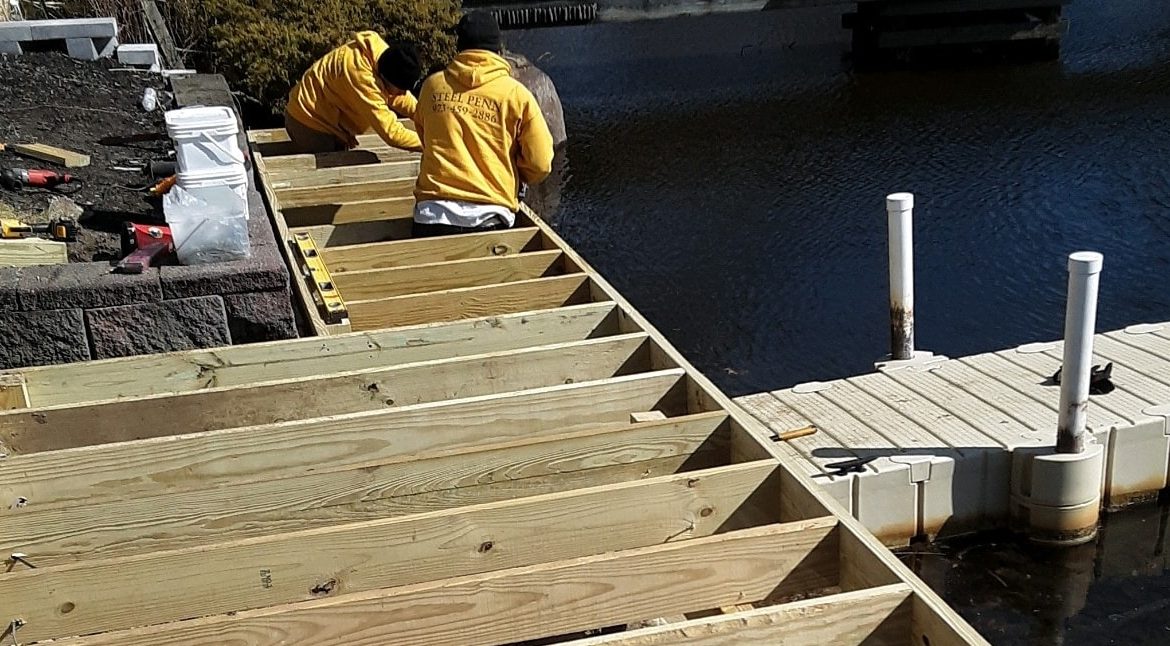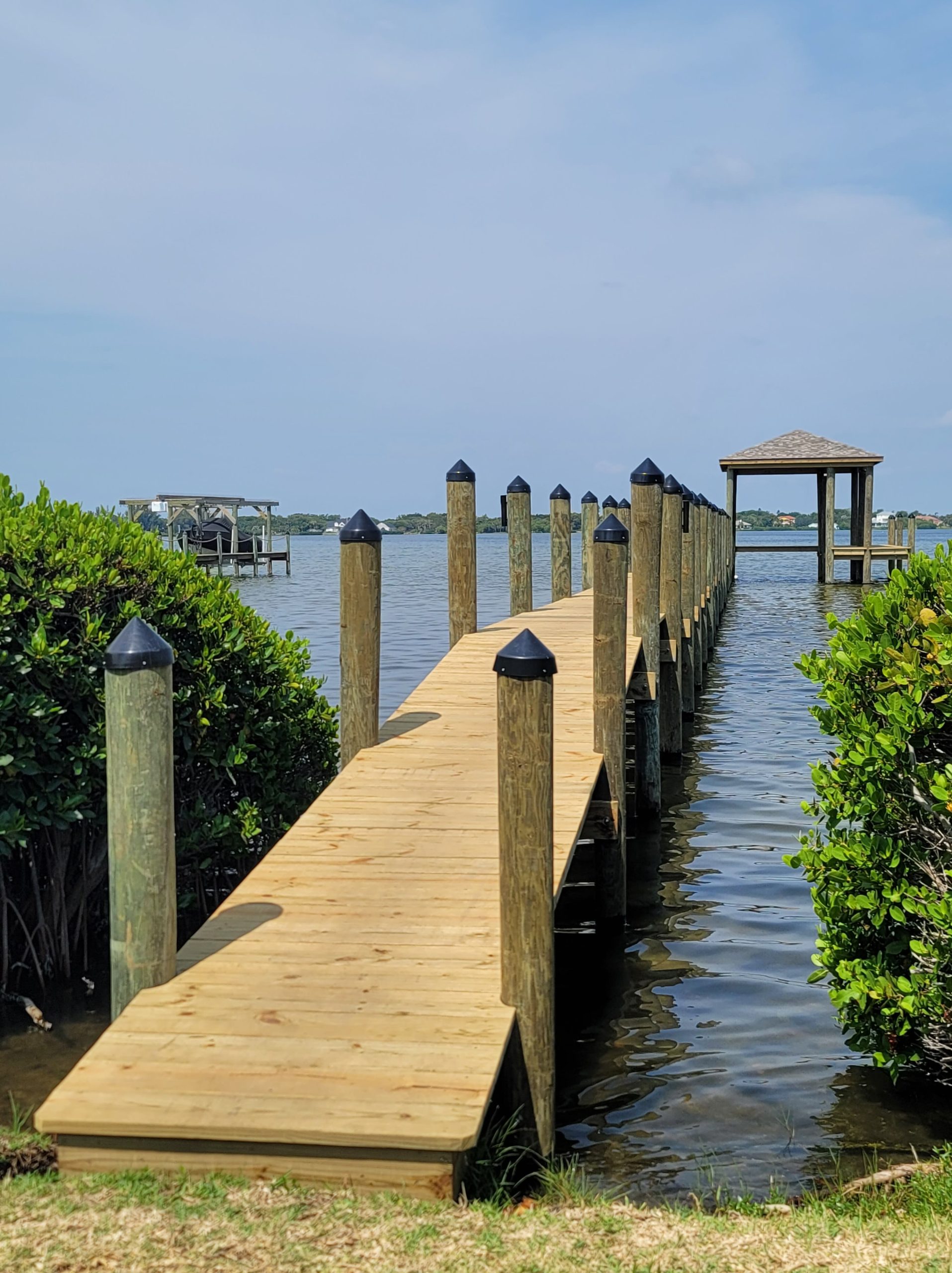Seasonal Preparations: When to Arrange Your Dock Repairs
Seasonal Preparations: When to Arrange Your Dock Repairs
Blog Article
Efficient Dock Repair Service Techniques: Making Certain Architectural Stability
Making certain the structural stability of docks with reliable repair work methods is paramount for the durability and safety and security of marine facilities. Ultimately, choosing the best repair service materials, such as composite products and corrosion-resistant alloys, is vital for resilience.
Examining Dock Damage
Analyzing dock damages is an essential initial step in making certain the architectural integrity and safety and security of any docking center. This preliminary examination includes a detailed examination to identify both surprise and noticeable damages. Secret elements to examine consist of the dock's structure, pilings, outdoor decking, and equipment. Each element should be looked at for indicators of wear, rot, deterioration, or various other kinds of degradation that could compromise the structural integrity.
Architectural designers or qualified examiners normally do these evaluations utilizing specialized tools and techniques. As an example, undersea inspections could use sonar equipment or remotely ran cars (ROVs) to discover submerged damages. Over water, visual inspections are enhanced by utilizing moisture meters and various other analysis devices to reveal underlying problems not immediately noticeable to the naked eye.

Choosing Repair Work Materials
Choosing the proper repair service products is a crucial action in the dock reconstruction procedure, one that straight affects the longevity and efficiency of the fixed framework. Product option have to be driven by variables such as ecological conditions, load-bearing needs, and compatibility with existing dock components. For example, timber is a typical selection for anchors because of its natural durability and visual charm. Picking the ideal type of wood, such as pressure-treated lumber or normally rot-resistant types like cedar or teak, is crucial to hold up against water atmospheres.
In addition to timber, composite materials are significantly preferred because of their resilience and reduced maintenance demands. Compounds, usually made from a blend of plastic and wood fibers, offer outstanding resistance to rot, insects, and UV damage. For steel docks, picking corrosion-resistant alloys such as galvanized steel or marine-grade aluminum is important to avoid corrosion and guarantee architectural integrity in saline water problems.
Epoxy resins and marine-grade sealers are indispensable for repairing cracks and securing joints, offering a water resistant barrier and boosting the dock's total strength. By carefully choosing high-grade materials, dock repair work can accomplish resilient outcomes, therefore guarding against future degradation and guaranteeing risk-free, trusted usage.
Architectural Support Strategies
Efficient structural support strategies are important in making sure the stability and durability of dock repair work. This method is specifically reliable for docks exposed to hefty tons or severe ecological problems.
An additional crucial strategy is the application of fiber-reinforced polymers (FRP) These materials provide high strength-to-weight proportions and exceptional resistance to rust, making them ideal for see this here enhancing concrete or wooden anchors. FRP can be applied in strips or sheets and bonded with epoxy materials to enhance architectural stability.
Supporting and securing systems also play a crucial duty in structural support. Cross-bracing, using metal or wood light beams, can counteract lateral forces, reducing persuading and movement. Anchoring systems, such as helical piers or driven piles, offer a steady structure by transferring lots to deeper, extra steady soil layers.
Finally, the integration of load-distribution plates can aid distribute weight a lot more evenly across the dock's surface area, reducing localized anxiety points. These methods jointly guarantee that anchors continue to be robust and secure, qualified of withstanding the roughness of their functional environment.
Advanced Repair Service Approaches

One more sophisticated method includes underwater welding, which enables repairs to be conducted without the need to dewater the location. This their explanation approach is specifically helpful for resolving architectural problems in submerged dock components, ensuring marginal disturbance to operations. Enhanced welding techniques, paired with robot systems, provide precision and integrity, therefore prolonging the life expectancy of the dock.
Additionally, cathodic defense systems are carried out to avoid rust in metallic dock frameworks. By utilizing sacrificial anodes or impressed existing systems, these methods efficiently mitigate the electrochemical procedures that cause material damage.
Finally, advanced surveillance innovations, such as architectural health and wellness monitoring (SHM) systems, give real-time information on the condition of dock frameworks. These systems allow proactive upkeep and timely treatments, ultimately making sure the long-term architectural integrity of the dock.
Upkeep and Prevention
Upkeep and prevention are basic concepts that underpin the long life and safety of dock frameworks. Regular assessments are paramount, enabling for very early detection of damage, potential weaknesses, and ecological impacts. A positive approach, including regular checks for rust, rot, and architectural changes, reduces expensive repairs and prolongs the dock's functional life.
Preventive procedures need to include applying protective layers to metal elements to defend against rust and using treated timber to stand up to degeneration. Additionally, guaranteeing appropriate water drainage and air flow can prevent water build-up, which is a typical source of architectural destruction. Including quality materials and adhering to producer guidelines during building and fixing look at here stages additionally play crucial roles in enhancing sturdiness.

Training employees in dock upkeep finest practices ensures regular application of precautionary steps. Leveraging technological breakthroughs, such as drones for examinations and sensors for real-time monitoring, can better improve maintenance initiatives. By focusing on maintenance and avoidance, dock owners can ensure architectural stability, operational safety and security, and affordable management over the dock's life-span.
Final Thought
In verdict, maintaining the structural stability of marine facilities requires thorough dock repair techniques. Advanced repair work methods, combined with normal upkeep techniques, ensure the dock remains operational and risk-free under varied ecological problems.
Ensuring the structural integrity of docks through effective repair work techniques is vital for the durability and security of aquatic facilities.Choosing the suitable repair work products is a crucial action in the dock repair procedure, one that directly influences the longevity and performance of the fixed framework.Efficient structural reinforcement techniques are critical in making certain the security and durability of dock fixings. By focusing on upkeep and prevention, dock owners can make certain architectural stability, operational safety, and cost-efficient monitoring over the dock's life expectancy.
In conclusion, maintaining the architectural stability of marine facilities necessitates thorough dock repair service methods.
Report this page